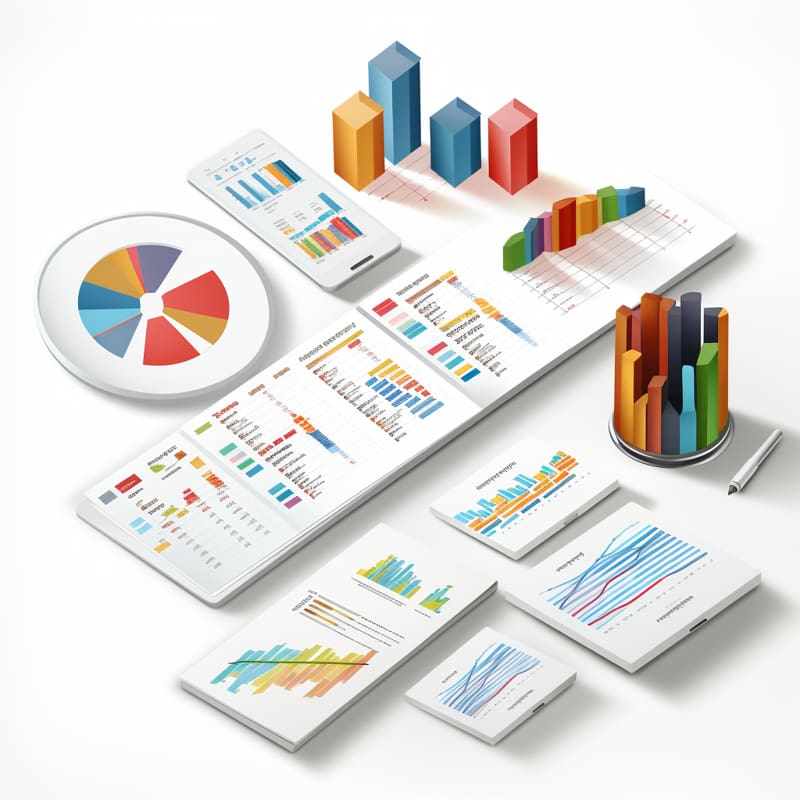Oracle BI Publisher Interview Questions
Oracle Bi Publisher interview questions, This session is covered with All the necessary information for the interview preparation – everything from technology stack understanding.
how to ace interviews, and the most popular questions is provided here – which makes this resource useful whether you are just graduating from university or seeking to transition into this career field from other fields.
So, what are we waiting for – make an impactful impression and use these skills now.

1.How do you create a repeating section in the BI Publisher report?
To create a repeating section in the BI Publisher report, create a group by invoice type and select the invoice type lookup code.
Add data columns to the repeating group, including the invoice type and sum of invoice amount.
2.What is the difference between the data output and the actual sum of invoice amounts?
The data output in the PDF format shows the sum of invoice amounts on the right for each invoice type, but the data output is different from the actual sum.
3.How do you fix the data output to show the actual sum of invoice amounts?
To fix the data output and show the actual sum of invoice amounts, you can export the data and create a pivot chart to show the actual sum of invoice amounts by each invoice type.
4.What is included in the PDF format?
In the PDF format, the different invoice types are displayed on the left, and the sum of invoice amounts is displayed on the right for each invoice type.
5.What is Oracle Business Intelligence Publisher used for?
Oracle Business Intelligence Publisher is used to create highly formatted reports using data from both the Oracle BI repository and other data sources.
It complements structured data analysis style reports created using Oracle Answers in OBI by providing a means to add blocks of text, images, and other content to the reports.
Oracle BI Publisher allows complete control over layout, including images, logos, and other content.
6.What is the installation process for Oracle BI Publisher?
The installation process for Oracle BI Publisher involves downloading and unzipping OBI 1221, installing the Weblogic infrastructure, and running the bi-platformExify as administrator.
The installation layer opens, and the bi platform is installed successfully. Next, create B schemas using RCU, create a repository system load and product load, and provide Oracle database credentials.
The schemas are created using the RCU dot bat file, and the username and password for the schemas are provided.
7.How do you set up the bi-product home in Oracle BI Publisher?
To set up the bi-product home in Oracle BI Publisher, create an environment variable for the middleware bi directory and run the config.cmd config.cmd.
The installer will check the base, select the desired tool (BI Publisher Enterprise Edition and BI Publisher BI Intelligence Publisher), and request the weblogic password.
The domain name is left as BI, and the password for Weblogic is given.
8.What is the next step after configuring Oracle BI Publisher?
After configuring Oracle BI Publisher, allow access to be granted, and save the file for reference.
This is important because it contains all URLs provided for the web logic console, fusion middleware control, enterprise manager, publisher, and analytics.
The installation process for BI Publisher is completed successfully.
9.What is the purpose of creating a data model in Bi Publisher?
Creating a data model in Bi Publisher allows you to select the data source from the default data source, such as employees, and then filter out some columns.
You can also join tables and select the columns you want to display in the report.
10.How do you create a list of values in Bi Publisher?
To create a list of values in Bi Publisher, you can create a list of value classes and then add values to each list.
For example, you can create a list of values for the department name and another list of values for the facility department and department name.
11.How do you resolve an issue with the setup of the database name and SQL list of values in Bi Publisher?
To resolve an issue with the setup of the database name and SQL list of values in Bi Publisher, you can open another browser and uncheck the “save this data model salary report parameter” option.
This will allow parameters to be saved, but the missing SQL query will not be saved.
12.What is the SQL query used in Bi Publisher for creating a report?
The SQL query used in Bi Publisher for creating a report is a query builder for countries, departments, and employees.
The query points to a specific department and adds salary conditions.
13.How do you add parameters to an SQL query in Bi Publisher?
To add parameters to a SQL query in Bi Publisher, you can add two parameters: E M P TPT name and employee first name.
These parameters will help to select the correct department and department name in the query.

Oracle BI Publisher Training

To create a report in Bi Publisher, you can follow these steps:
1.Create a data source and create a data model.
2.Select the data source and create a data model using the provided data source.
3.Create a new report using the created data model.
4.Select the source of the data for the report, select the data columns to be displayed in the report, and add a meaningful layout for this data.
5.Define the properties of the report parameters and schedule the report.
6.Configure the properties for the report, which enable you to control many aspects of the report generation formatting and display.
7.Add translations for the report.
15.What is the first step in creating a new report in Bi Publisher?
The first step in creating a new report in Bi Publisher is selecting an existing data model from the catalog or uploading a Microsoft Excel file.
16.What are the properties of a report in Bi Publisher?
The properties of a report in Bi Publisher enable you to contribute many aspects of report generation formatting and display, optionally adding a translation for the report.
17.How do you manage report jobs in Bi Publisher?
To manage report jobs in Bi Publisher, you can click on the report job and modify the schedule to run the job daily. In Oracle, you can schedule a report job and view the output.
18.How do you create a new report using the TF template in Bi Publisher?
To create a new report using the TF template in Bi Publisher, you can go to the Bi Publisher tab In Word, open the template, and browse the catalog for reports.
Then, you can create a new layout and save the layout as a default layout.

Oracle BI Publisher Online Training

19.How do you create a VIP Report Template (RTF) template in Bi Publisher in online mode?
To create a VIP Report Template (RTF) template in Bi Publisher in online mode, you need to follow these steps:
1.Install the template builder by clicking on “Enable disable template builder.”
2.Open the Bi Publisher tab In Word and generate a report.
3.Go to the Sample Light schema publish reports section and import the sample XML file.
4.Insert fields such as customer name, address, and transaction number into the XML file.
5.Group by transaction type, transaction date, and balance.
6.Create a table using the table wizard and select the right data set.
7.Save the file and preview it in PDF.
8.Open the template in the BI Publisher interface and make it the default layout.
9.Run the report based on the template created in the RTF template.

To skill up and to check your skills let’s give it a try with MCQ:
1) When creating a report in Bi Publisher, after selecting the data model, what is the next step?
A) Designing a layout for the report data
B) Setting the installation process for Oracle BI Publisher
C) Creating a new data model from scratch
D) Scheduling the report for various destinations
2) In Oracle BI Publisher, what is the purpose of creating a data source?
A) To configure the job scheduler for automating report delivery
B) To define the data to be used by a report
C) To design the graphical layout for the report
D) To manage user roles and security within the Weblogic infrastructure
3) What is used in BI Publisher to graphically represent aggregated data by group in a report layout?
A) A pivot chart
B) A layout grid
C) A global header
D) The validated template utility
4) Before saving a BI Publisher report, what is important to include if you want a translated version?
A) Changing the color to subtle in Excel
B) Create a JDBC connection string
C) Designing a dashboard in the Weblogic interface
D) Add translations for the report
5) How is the actual sum of invoice amounts displayed graphically in the tutorial?
A) At the top of a layout grid after moving it to the first column.
B) The sum of invoice amounts is displayed on the right for each invoice type.
C) Alongside the labels at the max edge of the chart plot area.
D) In the PDF report layout as a list item.
6) What does a repeating group in BI Publisher allow you to do within the report layout according to the tutorial?
A) Control user permissions and roles for Weblogic security realms.
B) Embed live Twitter feeds relating to the business invoice data.
C) Directly edit the Oracle Business Intelligence data model.
D) Group items and show the sum of invoice amounts by each group.
7) What installation process for Oracle BI Publisher is described in the text?
A) Using RCU to install several unrelated schemas
B) Installing a proprietary Java Runtime Environment for Oracle VIP
C) Creating a custom Weblogic domain template without supplied credentials
D) Downloading and unzipping OBI 1221, installing Weblogic infrastructure, and running the bi-platformExify
8) What should the JDBC connection be named according to the administrative tasks described?
A) Weblogic infrastructure connection
B) VIP demo
C) HR schema
D) BI Publisher Enterprise Edition
Hopefully, you gained all of the insight and practice required to ace that interview through this blog. display your enthusiasm while remaining professional throughout. With proper mindset and preparation, your dream job may await! I wish you good luck.

Oracle BI Publisher Course Price


Harsha Vardhani
Author